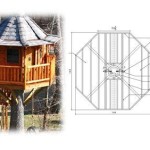The Best Indoor Plants for Home
Bringing the outdoors in has become a popular trend, and for good reason. Indoor plants not only enhance the aesthetic appeal of a home but also offer a range of health benefits. They can improve air quality, reduce stress levels, and boost overall well-being. Choosing the right indoor plants, however, is crucial to ensuring their survival and maximizing their positive impact. This article explores some of the best indoor plants suitable for a variety of home environments and care preferences.
Low-Maintenance Options for Beginners
For individuals new to plant care or those with busy lifestyles, selecting low-maintenance plants is a practical approach. These plants are generally tolerant of inconsistent watering schedules and varying light conditions, making them forgiving and easy to care for.
The Snake Plant (Sansevieria trifasciata), also known as Mother-in-Law's Tongue, is a virtually indestructible plant. It can thrive in low light conditions and requires infrequent watering. The Snake Plant is also renowned for its air-purifying capabilities, effectively removing toxins such as formaldehyde, xylene, toluene, and nitrogen oxides from the air.
Another excellent choice for beginners is the ZZ Plant (Zamioculcas zamiifolia). This plant is incredibly drought-tolerant and can survive in very low light conditions. Its glossy, dark green leaves add a touch of elegance to any room, and its resilience makes it a reliable choice for forgetful plant owners.
The Pothos (Epipremnum aureum) is a trailing vine that is easy to propagate and care for. It comes in various varieties, including golden pothos, marble queen pothos, and neon pothos, each offering unique foliage patterns. Pothos plants tolerate a wide range of light conditions and can be easily pruned to control their growth. They also contribute to improved air quality.
Cast Iron Plant (Aspidistra elatior) earns its name for its exceptional resilience. It tolerates neglect, low light, and infrequent watering, making it an ideal choice for those who often travel or have limited time for plant care. The Cast Iron Plant's dark green foliage adds a classic, understated elegance to any space.
Air-Purifying Powerhouses
Indoor air can often be more polluted than outdoor air due to the presence of volatile organic compounds (VOCs) released from furniture, paints, and cleaning products. Certain indoor plants are particularly effective at removing these pollutants, creating a healthier living environment.
The Spider Plant (Chlorophytum comosum) is a popular choice for its air-purifying abilities and its ease of propagation. It produces small "spiderettes" on long stems, which can be easily rooted to create new plants. Spider plants thrive in bright, indirect light and require moderate watering. They are particularly effective at removing formaldehyde and xylene from the air.
Peace Lilies (Spathiphyllum wallisii) are known for their elegant white blooms and their ability to filter a wide range of toxins from the air, including formaldehyde, benzene, trichloroethylene, xylene, and ammonia. They prefer shady locations and require consistent moisture. Wilting leaves are a clear indicator that the plant needs watering. It's important to note that Peace Lilies are toxic to pets if ingested.
The Aloe Vera plant (Aloe barbadensis miller) is not only an excellent air purifier but also a useful medicinal plant. Its leaves contain a gel that can be used to soothe burns and cuts. Aloe Vera prefers bright, indirect light and well-draining soil. It requires infrequent watering, allowing the soil to dry out completely between waterings.
Chrysanthemums (Chrysanthemum morifolium) are vibrant flowering plants that are highly effective at removing benzene, formaldehyde, xylene, and ammonia from the air. They require bright light and regular watering to thrive. Chrysanthemums are often sold as seasonal plants, but with proper care, they can be kept alive for extended periods.
Statement Plants for Visual Impact
For those looking to make a bold statement with their indoor plant collection, certain species offer striking foliage, unique growth habits, and impressive sizes. These plants can serve as focal points in a room, adding a touch of drama and sophistication.
The Fiddle Leaf Fig (Ficus lyrata) is a popular choice for its large, violin-shaped leaves and its architectural presence. It requires bright, indirect light and consistent watering, but is sensitive to overwatering. Proper drainage is essential to prevent root rot. The Fiddle Leaf Fig can be a bit finicky, but with the right care, it can grow into a stunning specimen.
The Monstera Deliciosa, also known as the Swiss Cheese Plant, is characterized by its large, fenestrated leaves. As the plant matures, its leaves develop distinctive holes and slits, adding to its unique appeal. Monstera Deliciosa prefers bright, indirect light and requires regular watering. It can be trained to climb a moss pole or allowed to spread naturally.
The Bird of Paradise (Strelitzia reginae) is a tropical plant known for its exotic flowers that resemble a bird in flight. It requires bright light and regular watering to bloom. Even without flowers, its large, banana-like leaves add a touch of the tropics to any indoor space. Bird of Paradise plants can grow quite large, so they require ample space.
The Rubber Plant (Ficus elastica) is a striking plant with glossy, dark green leaves. It comes in various varieties, including Burgundy, which features deep red foliage. Rubber Plants prefer bright, indirect light and require moderate watering. They are relatively easy to care for and can grow into impressive trees with proper pruning.
Considerations for Choosing Indoor Plants
Selecting the right indoor plants involves considering several factors, including the amount of natural light available, the humidity levels in the home, and the individual's commitment to plant care. It is essential to research the specific needs of each plant before bringing it home to ensure its long-term health and well-being.
Light is a crucial factor in plant growth. Different plants have different light requirements. Some plants thrive in bright, direct sunlight, while others prefer indirect or low light. Pay attention to the direction of your windows and the amount of sunlight that enters each room. South-facing windows typically receive the most sunlight, while north-facing windows receive the least.
Humidity is another important consideration. Some plants, particularly those from tropical regions, require high humidity levels. If your home has dry air, you may need to increase humidity around your plants by using a humidifier, grouping plants together, or placing them on a pebble tray filled with water.
Watering is perhaps the most critical aspect of plant care. Overwatering is a common mistake that can lead to root rot, while underwatering can cause plants to wilt and die. The frequency of watering depends on the plant species, the size of the pot, the type of soil, and the environmental conditions. It's generally best to check the soil moisture before watering and only water when the top inch or two of soil feels dry.
Soil type is also a significant factor. Different plants have different soil requirements. Some plants prefer well-draining soil, while others prefer soil that retains moisture. Use a potting mix that is specifically formulated for the type of plant you are growing.
Fertilizing provides plants with essential nutrients that they need to grow and thrive. Use a balanced fertilizer during the growing season (spring and summer) and reduce or eliminate fertilizing during the dormant season (fall and winter). Follow the instructions on the fertilizer packaging carefully to avoid over-fertilizing, which can damage plants.
Repotting is necessary when plants outgrow their pots. Signs that a plant needs repotting include roots circling the bottom of the pot, slow growth, and frequent drying out of the soil. Choose a pot that is slightly larger than the current pot and use fresh potting mix.
Finally, be aware of potential pests and diseases. Common pests include spider mites, aphids, mealybugs, and scale. Regularly inspect your plants for signs of infestation and take action promptly to prevent the pests from spreading. Diseases can also affect indoor plants, so it's important to provide proper care and maintain good air circulation to prevent disease outbreaks.

26 Best Indoor Plants For Your Home

25 Best Indoor Plants To Liven Up Your Home

25 Best Indoor Plants Low Maintenance To Grow
Best Plants For Every Room In Your House According To Plant Stylists

Indoor Plants The Home Depot

25 Best Indoor Plants To Liven Up Your Home

22 Best Indoor Plants For Low Light And More Per Experts

13 Of The Best Indoor Plants For Your Home That Survive Neglect

The Best Indoor Plants 2024 Forbes Vetted

7 Science Backed Benefits Of Indoor Plants








